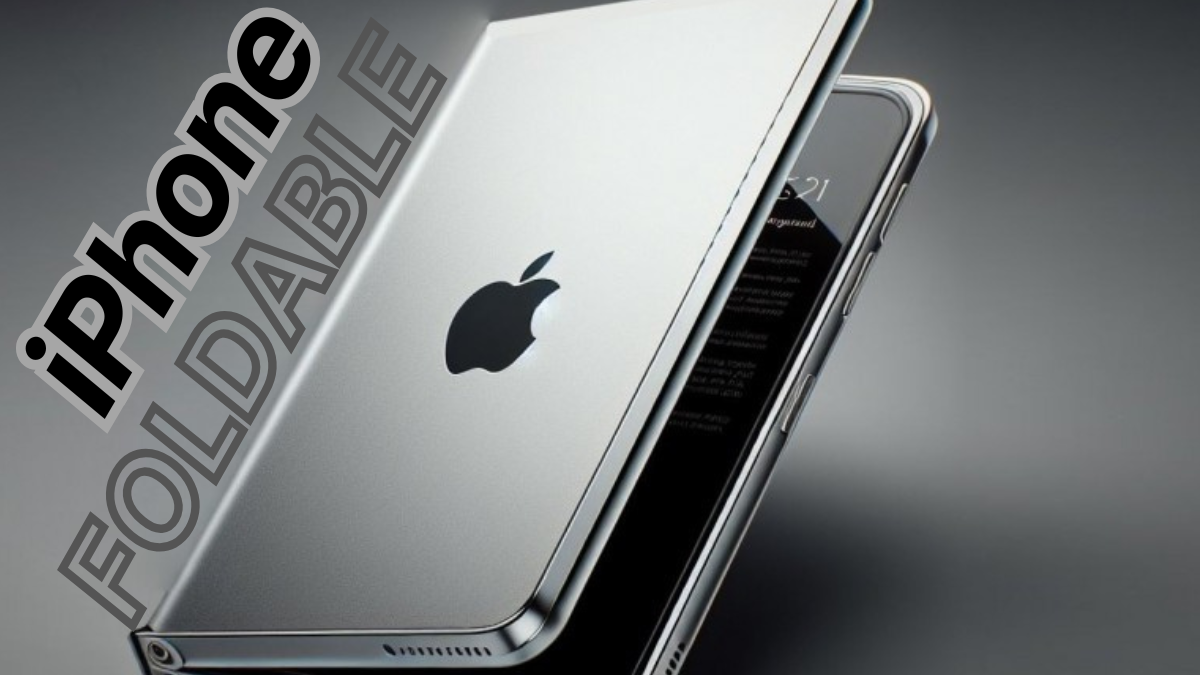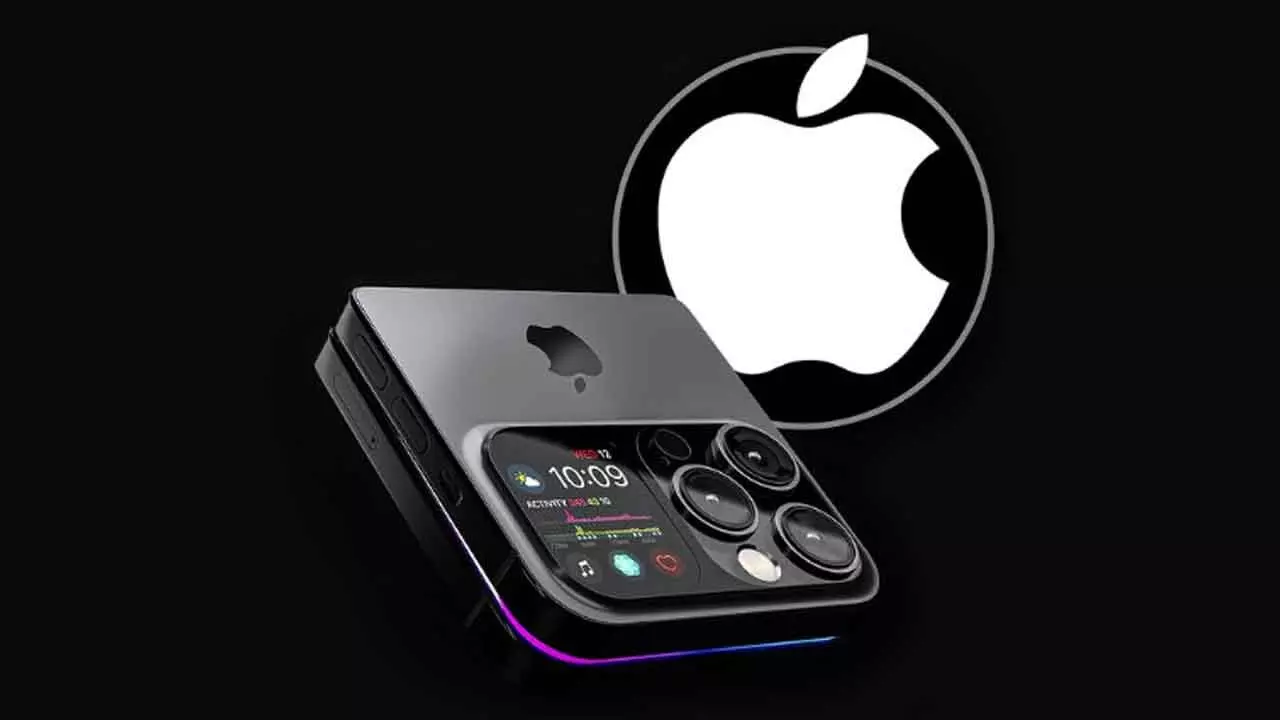After years of speculation and rumors, Apple’s first foldable iPhone may finally be ready to unfold. Recent reports from industry insiders suggest that the tech giant is preparing to launch its long-awaited foldable device in 2026, potentially alongside the iPhone 18 series. This development marks what could be Apple’s most significant design evolution since the iPhone X introduced the notch and Face ID in 2017.
The foldable iPhone has been the subject of countless rumors and patent filings over the past five years. While competitors like Samsung have been refining their foldable technology through multiple generations, Apple has characteristically waited on the sidelines. This patient approach aligns with the company’s strategy of entering new product categories only when they can deliver a premium experience that meets their exacting standards.

According to Bloomberg’s Mark Gurman, whose track record for Apple predictions is notably accurate, the company has now finalized the design and is moving forward with production plans. The timing couldn’t be more strategic, as the foldable smartphone market continues to mature and consumer acceptance grows.
Design and Display: A Samsung Partnership
The upcoming foldable iPhone is expected to adopt a book-style design similar to Samsung’s Galaxy Z Fold series. This format features dual displays: a 5.5-inch external cover screen for everyday use and a larger 7.8-inch foldable inner display that opens like a book.
Samsung Display will reportedly supply the bendable OLED panels, leveraging their extensive experience in foldable technology. This partnership represents a fascinating twist in the Apple-Samsung relationship, where the companies compete fiercely in smartphones while maintaining crucial supplier arrangements.
Apple has reportedly set exceptionally high standards for the display quality. The foldable screen is designed to minimize or eliminate the visible crease that has plagued early foldable devices. The company has invested significant resources in developing an improved hinge mechanism and utilizing thinner display materials to achieve this goal.
The device is expected to measure approximately 4.5mm thick when unfolded and around 9mm when closed, positioning it among the thinnest foldable smartphones available. This engineering achievement would demonstrate Apple’s commitment to maintaining the premium feel and portability that iPhone users expect.
Software Adaptation: iOS 27 and Beyond
Apple is reportedly developing iOS 27 specifically with foldable functionality in mind. The operating system will need to seamlessly handle transitions between the cover display and the main foldable screen, ensuring that apps can adapt to different screen configurations without disrupting the user experience.
Enhanced multitasking capabilities are expected to be a key feature, allowing users to run multiple apps simultaneously across the expanded screen real estate. Split-screen functionality and improved app continuity will likely be central to the foldable iPhone experience.
There’s also speculation about potential Apple Pencil support, which could transform the device into a digital notebook or creative canvas when unfolded. This feature would further differentiate Apple’s approach from existing foldable smartphones and appeal to productivity-focused users.
Pricing and Market Position
Industry analysts project the foldable iPhone will carry a premium price tag of around $2,000, placing it firmly in the ultra-luxury smartphone segment. This pricing strategy reflects both the advanced technology required for foldable displays and Apple’s positioning of the device as a flagship product.
The high price point places the foldable iPhone above even the iPhone Pro Max models, suggesting Apple views this as a distinct product category rather than a replacement for existing iPhone lines. This approach mirrors how the company has historically introduced new product categories, such as the Apple Watch, as premium additions to their ecosystem.
Strategic Market Focus
China is expected to be a primary focus market for the foldable iPhone launch. The region has shown strong adoption rates for foldable devices, making it an ideal testing ground for Apple’s entry into this category. Chinese consumers have demonstrated willingness to pay premium prices for cutting-edge smartphone technology, particularly from prestigious brands like Apple.
However, global availability remains uncertain for the first-generation model. Apple may choose to limit initial distribution while they scale production and gather user feedback, a strategy they’ve employed with previous product launches.
Technical Innovations and Compromises

The foldable iPhone may incorporate several design changes to accommodate the folding mechanism. Reports suggest the device could feature a side-mounted Touch ID sensor instead of Face ID, possibly as a trade-off to maintain the slim profile and accommodate the complex internal architecture required for the folding display.
The camera system is also expected to evolve, with speculation about a dual-lens rear camera setup and a new Meta Lens front camera technology. These changes suggest Apple is rethinking traditional iPhone camera placement and functionality for the foldable form factor.
Battery technology and thermal management will be crucial considerations. The foldable design requires careful engineering to ensure adequate battery life while managing heat generation across the device’s unique form factor.
Competitive Landscape and Timing
Apple’s entry into the foldable market comes after Samsung has established significant expertise through multiple generations of Galaxy Z Fold and Z Flip devices. Other Android manufacturers, including Google, OnePlus, and Huawei, have also introduced foldable smartphones with varying degrees of success.
This timing allows Apple to learn from the early challenges faced by competitors, including durability issues, software optimization problems, and user adoption hurdles. By waiting until 2026, Apple can potentially leapfrog some of these early-generation issues while introducing innovations that set their foldable apart.
The smartphone market has also matured significantly since the first foldables launched. Consumer awareness and acceptance of foldable technology has grown, potentially creating a more receptive market for Apple’s premium-priced entry.
Manufacturing and Supply Chain Considerations
Reports indicate that Apple plans to produce six to eight million units of the foldable iPhone initially. This relatively modest production volume reflects the device’s premium positioning and the complexity of manufacturing foldable displays at scale.
Samsung Display is reportedly preparing dedicated production lines at their A3 facility in South Korea specifically for Apple’s foldable panels. This investment demonstrates the significance both companies place on this partnership and the expected longevity of their collaboration.
Component suppliers Fine M-Tec and Samsung are also expected to contribute to the hinge mechanism development, bringing expertise from their work on existing foldable devices while meeting Apple’s specific requirements for durability and user experience.
Looking Toward the Future
The foldable iPhone represents more than just a new form factor; it could signal Apple’s broader strategy for the next decade of mobile computing. As smartphones reach maturity in traditional design, foldable technology offers new possibilities for user interaction and functionality.
Success in the foldable market could open doors for Apple to explore other bendable and flexible display technologies across their product lineup. Imagine foldable iPads, curved displays, or entirely new product categories enabled by flexible screen technology.
The company’s typically methodical approach to new technologies suggests that the 2026 foldable iPhone will be thoroughly tested and refined before launch. Apple’s reputation depends on delivering polished products that work seamlessly from day one, making their eventual entry into foldables particularly significant for the industry.
Ready for the Fold
Apple’s foldable iPhone journey has been long and deliberate, but 2026 may finally mark the company’s entry into this innovative product category. With Samsung’s display expertise, custom iOS software, and Apple’s design philosophy, the foldable iPhone promises to bring the company’s signature user experience to an entirely new form factor.
While the premium pricing may limit initial adoption, Apple’s foldable could establish new standards for design, durability, and functionality in the foldable smartphone market. As the technology continues to evolve, Apple’s patient approach may prove to be the key to creating a foldable device that truly enhances rather than complicates the smartphone experience.
The success of Apple’s foldable iPhone will ultimately depend on whether the company can deliver meaningful improvements over existing foldable devices while maintaining the reliability and ease of use that iPhone users expect. If they succeed, 2026 could mark the beginning of a new chapter in smartphone evolution.
FAQs About Foldable Iphone
1. When will the Apple foldable iPhone be released?
Apple’s foldable iPhone is rumored to launch in 2026, marking the company’s entry into the foldable smartphone market.
2. What display size can we expect?
The device is expected to feature a 7.8-inch display, developed in partnership with Samsung Display.
3. How much will the foldable iPhone cost?
Reports suggest that the foldable iPhone could have a price tag of approximately $2,000, positioning it as a premium offering in the market.
4. Will the foldable iPhone be durable?
Apple is likely to prioritize reliability and durability to ensure it meets the high standards expected by iPhone users.
5. Why is Apple partnering with Samsung for the display?
Samsung Display is a leader in foldable screen technology, and this partnership ensures Apple benefits from cutting-edge advancements for its upcoming foldable device.
For More Information Click HERE
